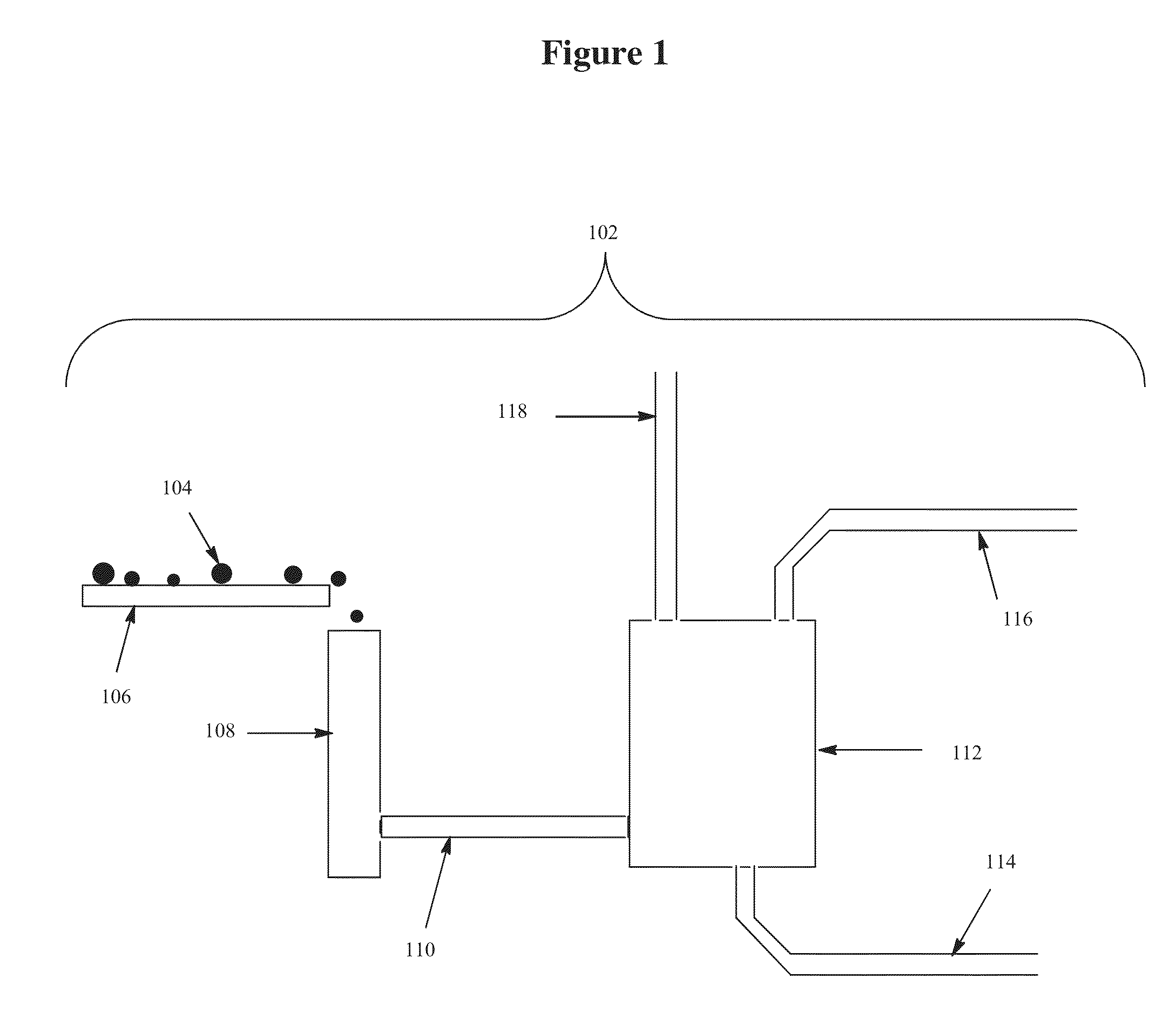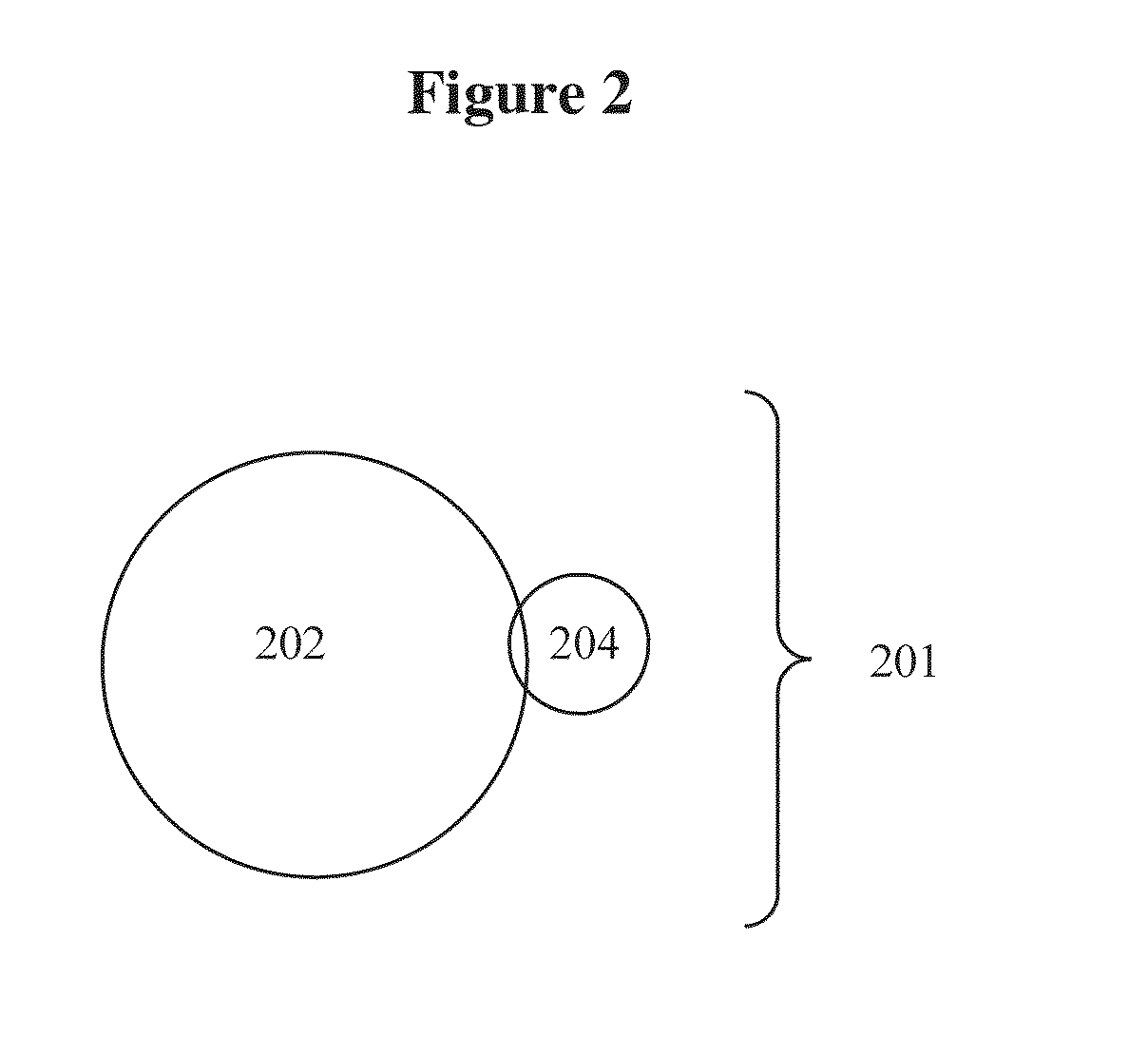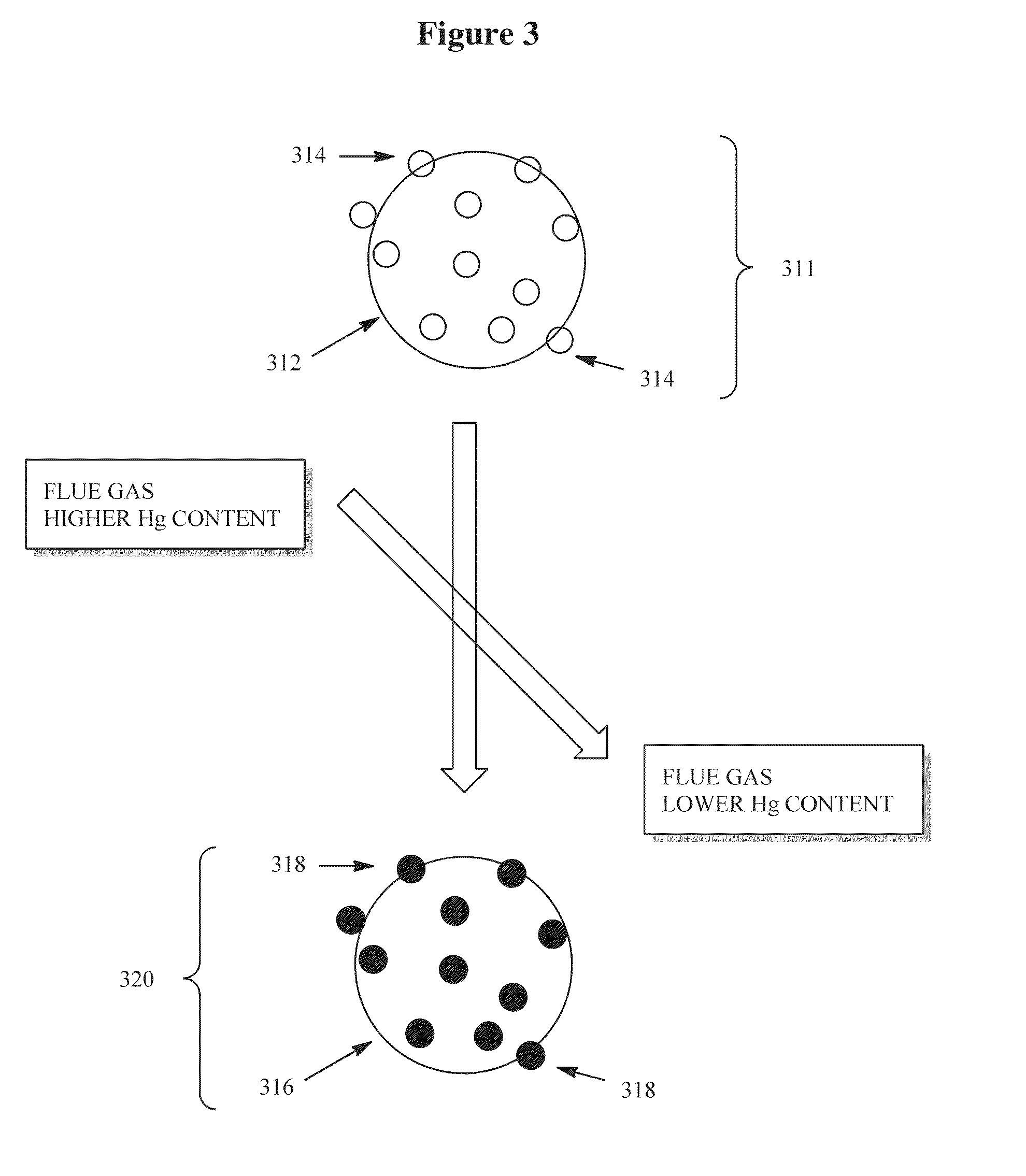Particle-based systems for removal of pollutants from gases and liquids
a technology of particle-based systems and gases, applied in the direction of physical/chemical process catalysts, other chemical processes, separation processes, etc., can solve the problem of particularly significant pollution of mercury, and achieve the effect of reducing the mercury content of the flue gas
- Summary
- Abstract
- Description
- Claims
- Application Information
AI Technical Summary
Benefits of technology
Problems solved by technology
Method used
Image
Examples
embodiment 1
[0059]A system for decreasing the content of mercury in a mercury-containing flue gas stream, comprising composite removal particles positioned in a path of the mercury-containing flue gas stream, wherein a composite removal particle comprises a support particle and a reactive particle, wherein the reactive particle of the composite removal particle combines with mercury in the flue gas stream, to form a mercury-bearing composite removal particle; and a trap for removal of the mercury-bearing composite removal particles, wherein the mercury content of the flue gas stream is decreased.
embodiment 2
[0060]The system of embodiment 1, wherein the support particle comprises a material selected from the group consisting of a metal oxide, iron (II) oxide, iron (III) oxide, a mixed iron oxide, copper oxide, titanium dioxide, aluminum oxide, manganese oxide, cerium oxide, molybdenum oxide, a metal nitride, titanium nitride, molybdenum nitride, a metal carbide, iron carbide, titanium carbide, molybdenum carbide, carbon, an inorganic oxide, an inorganic nitride, silicon dioxide, silicon carbide, a mixed metal oxide-hydroxide, a ceramic, boehmite and zeolite.
embodiment 3
[0061]The system of embodiment 2, wherein the support particle comprises silicon dioxide.
PUM
| Property | Measurement | Unit |
|---|---|---|
| diameter | aaaaa | aaaaa |
| diameter | aaaaa | aaaaa |
| diameter | aaaaa | aaaaa |
Abstract
Description
Claims
Application Information
 Login to View More
Login to View More - R&D
- Intellectual Property
- Life Sciences
- Materials
- Tech Scout
- Unparalleled Data Quality
- Higher Quality Content
- 60% Fewer Hallucinations
Browse by: Latest US Patents, China's latest patents, Technical Efficacy Thesaurus, Application Domain, Technology Topic, Popular Technical Reports.
© 2025 PatSnap. All rights reserved.Legal|Privacy policy|Modern Slavery Act Transparency Statement|Sitemap|About US| Contact US: help@patsnap.com



